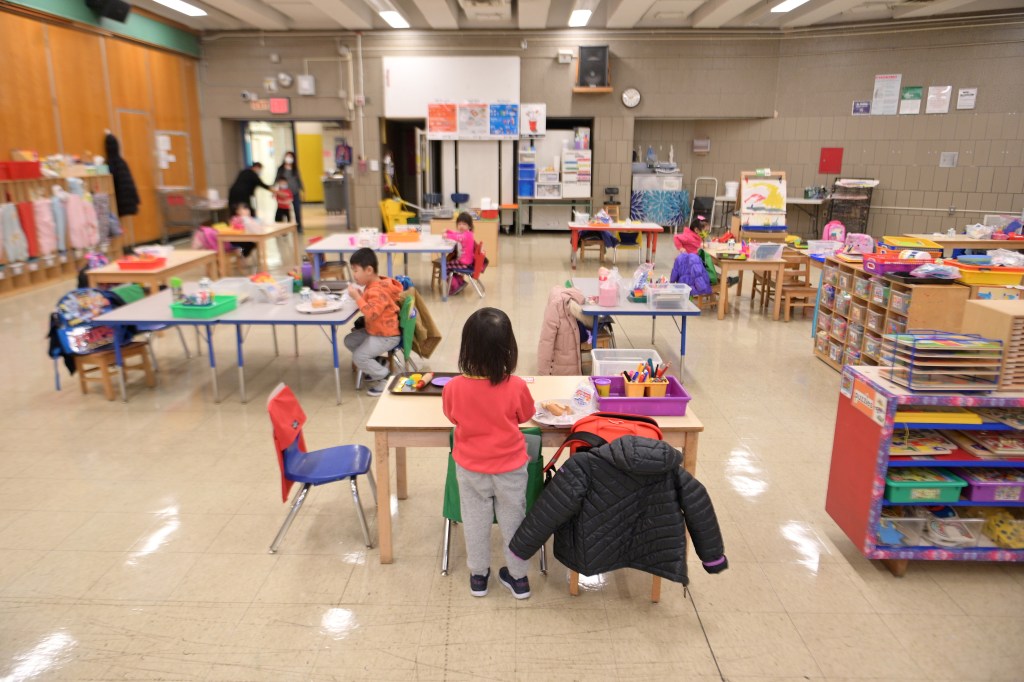Raising children in New York City can be hard and often requires heavy lifting. Try carrying a child in a stroller down the subway stairs. Add in the scarcity of housing, the inaccessibility of child care, and the rising cost of living, and it is no wonder that young families are leaving the city at increasing rates. New research from the Fiscal Policy Institute shows that parents with children under six are moving away from the city at twice the rate of other residents.
At the same time young families are leaving, there are some bright spots: an analysis of LinkedIn data by venture firm SignalFire found that more tech workers relocated to New York than any other city last year. Many of these workers — who power our fastest-growing industry — will soon start their own families and decide whether New York is a pit stop on their journey or their new lifelong home, and our city’s leaders should be doing everything they can to keep them here.
To make a true economic comeback following the COVID-19 pandemic, and for the city to continue to grow, families need to be able to live, work, and thrive here. One key policy choice that can help reverse these troubling population trends is public investment in child care.
Today, child care is inaccessible and unaffordable for far too many New Yorkers as detailed in the 5BORO Institute’s report on child care. Families are spending tremendous portions of their income on child care, keeping them from contributing to the local economy. Child care is not only an issue that impacts parents. In 2022 alone, the city is estimated to have lost $23 billion dollars in economic activity and $2.2 billion in tax revenues as a result of parents leaving the workforce or downshifting careers to meet child care needs.
For many families, the city’s 3-K and Pre-K programs have provided a vital lifeline. Access to free preschool can save families upward of $20,000 a year, giving parents the economic breathing room to stay in New York. But the uncertainty about 3-K access has left families in a state of limbo. As families prepared for this year’s application cycle, Mayor Adams said that every family would have access to a spot in the city’s program. We applaud the city’s commitment to this crucial service.
However, when families received their preschool offers last month, not every family was met with good news. About 2,500 families that applied to 3-K received no offer at all and many more received offers to programs that would be impractical for their children to attend given the far away location.
City Hall has pointed to the aggregate figures that suggest there are more than enough 3-K spots for every child. But for a family in Prospect Heights, Brooklyn that did not get an offer — a neighborhood where 3-K demand far outstrips supply — the surplus 3-K capacity on the Lower East Side is meaningless. Parents need access to care that is reliable and accessible; commuting 30 minutes or more to preschool is not viable for most working families.
Parents — and now labor leaders — are calling on city officials to ensure truly universal access to 3-K. We are adding our voices to make clear that this issue impacts more than just families.
Child care access is critical to our business sector and our economy. This is especially important for our tech sector, as New York has become a hub for women’s and family tech startups, many of which are founded and run by women.
A 2022 study conducted by Tech:NYC and the Center for an Urban Future found that New York was home to 123 startups working in women-focused products and services, up from 83 in 2017. The growth in this sub-sector represents a competitive advantage for New York over other tech hubs, but more robust childcare infrastructure is needed to ensure even more women can launch companies that fill unmet needs for other women, or continue their jobs in tech once they start a family to help close the industry’s persistent gender gap.
The business case for public spending on early childhood education is clear: Studies have shown that in neighborhoods with access to 3-K, maternal employment rates rose and stayed higher, even after children exited the 3-K program.
As our leaders continue to focus on boosting the local economy and supporting businesses in their continued recovery from the pandemic, the imperative should be clear: invest in early childhood education in every neighborhood to make sure that families can stay in New York and raise their children here. Our financial future depends upon it.
Rauh is the executive director of the 5BORO Institute. Samuels is the president and CEO of Tech:NYC and a 5BORO Institute board member.
